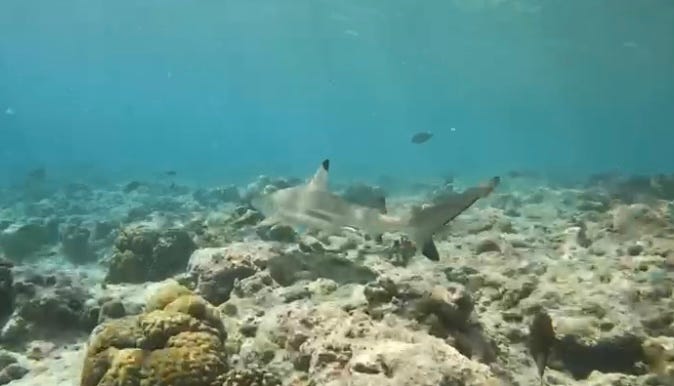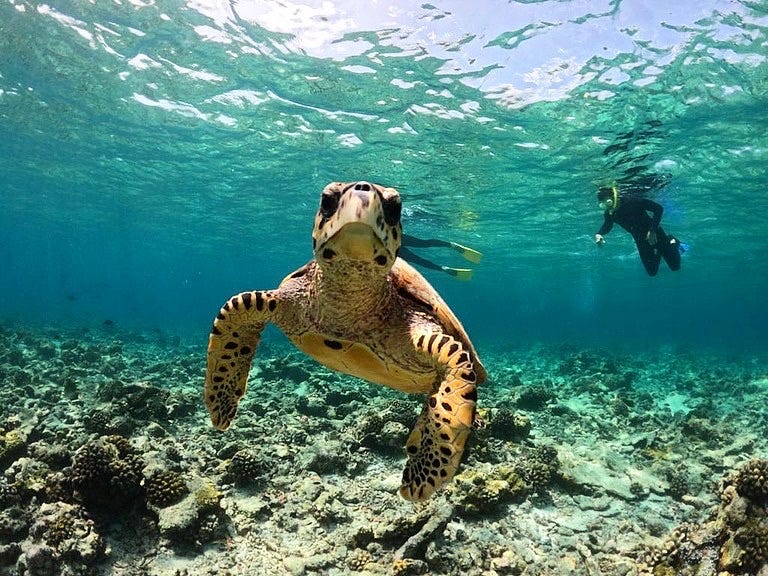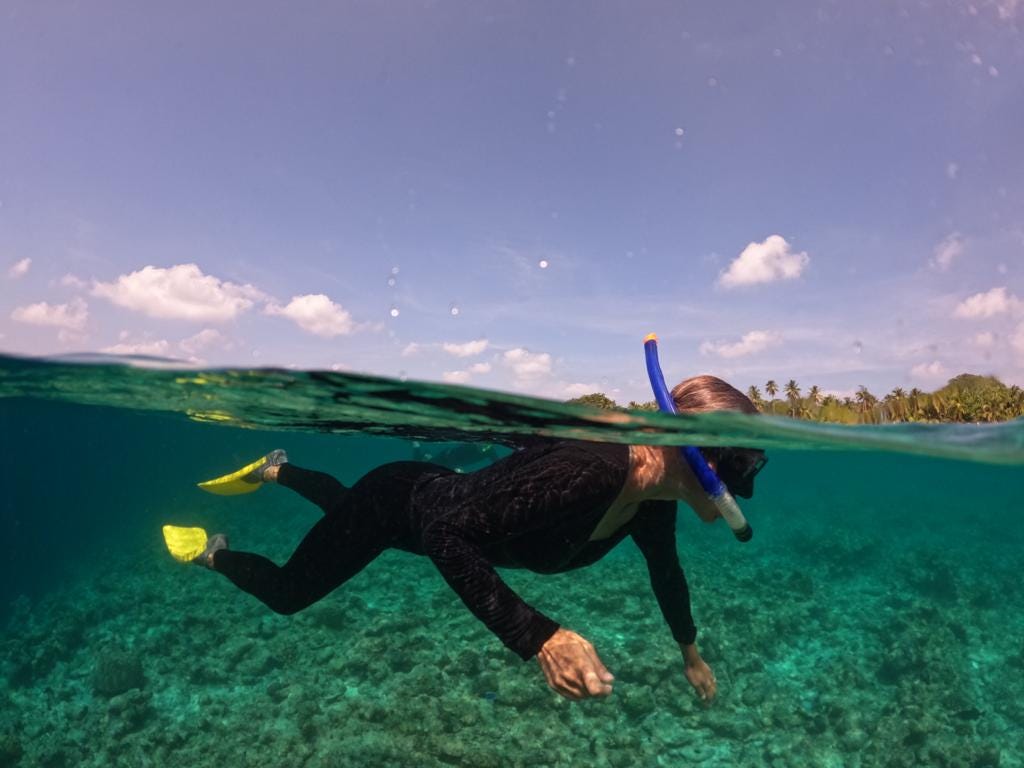Snorkeling: Sharks and Turtles!
In addition to its bikini beach, Rasdhoo Island is famous for its excellent snorkeling and diving. I am a huge snorkeling fan — it’s always a magical under the sea/Finding Nemo wonderland. I’m not a diver though, as I prefer immediate and constant access to oxygen. Just off Rasdhoo, one could dive with hammerhead sharks, but that would require diving (nope) and being near killer sharks (SO MUCH NOPE), so we will stick to snorkeling.
Just walking along the beach you get a taste for what the snorkeling might be like. I’ve seen multiple sharks, tons of fish, and a sea snake that turned out to be an eel that imitates sea snakes but is harmless (phew!) — all before even getting in the water. But we wanted to do it right, so we booked a two-hour three-location snorkeling trip. We counted nine shark sightings, one octopus, countless colorful fish, and swam alongside two sea turtles. Our guide brought a Go-Pro — I can’t embed videos into emails, but you can watch on my Instagram.
And good snorkeling isn’t limited to the boat trips! On Rasdhoo you can just awkwardly flipper-walk into the water at the beach, wade past a few rocks, and BOOM, you’re under the sea! Our guesthouse provided snorkeling equipment for free, so we used it a few times.

The only downside to the snorkeling was the sad state of the coral. Since 2014 rising sea temperatures have bleached (aka killed) most of the coral around Maldives. It’s still beautiful and the coral that is still alive is wow-inducing, but I can’t get my mind off the fact that it should be so much more. What not too long ago was a lush technicolor coral forest is now mostly bleached bones, with a few tenacious specimens interspersed.
Which brings me to an important point. Beyond its luxury resorts, Maldives’s* unfortunate claim to fame is that it is the country most likely to be literally destroyed by climate change/rising sea levels. With an average elevation of 1.5 meters (>5 feet) and its highest “mountain” a golf course feature at a towering 5.1 meters (17 feet), this country is the canary in the coal mine for the world. NASA and the US Geological Survey project that 80% of the Maldives will literally be under water by 2050. Said the Maldivian president in November, "If we do not reverse this trend [of rising sea levels], the Maldives will cease to exist by the end of this century." Ironically, its economy is dependent on wealthy foreign tourists burning all the fossil fuel to get here.
Sorry to be a downer, but it is a downer. Unfortunately I don’t have an optimistic spin on this situation to conclude with.
—
*In case you think “Maldives’s” looks weird grammatically, here’s how we figured it. "The Maldives" is used to refer to the group of islands so it takes the plural (I guess each island is one Maldive?). In that case the possessive would be Maldives’. However, the official name of the country is the singular "The Republic of the Maldives.” As far as I could tell, most Maldivians refer to their country as “Maldives” (no The)—an abbreviation of the full country name (which is singular). I try to refer to a place by the name its inhabitants use, therefore, Chris and I have concluded that the abbreviated possessive of "The Republic of the Maldives” is Maldives’s. Feel free to fight us on this.






